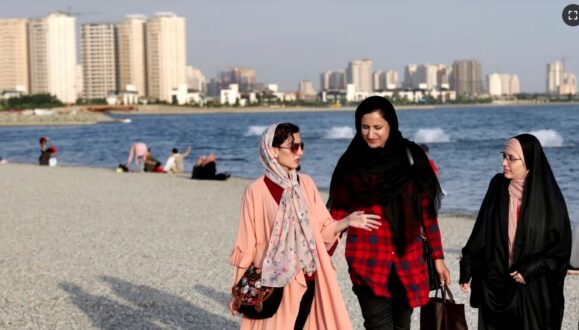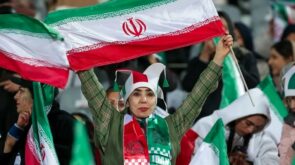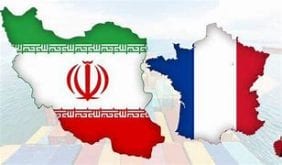Iranwire – The new school year has yet to begin in Iran, but it appears that certain school principals have issued warnings to families and students, cautioning them against engaging in any form of protest.
The warnings have been accompanied by threats of potential expulsions. One expressed has voiced concerns about the heightened possibility of widespread chemical attacks targeting schools in the upcoming year.
A mother of a student from southern Shiraz told IranWire that the school’s principal, during a preparatory session prior to the school’s reopening, admonished the students to adhere to the hijab dress code and that any students participating in protests would be expelled.
Students themselves meanwhile are embarking on the new school year burdened by distressing and unsettling recollections of the threats, suppressions, arrests, chemical attacks, and instances of explicit material being shown in some girls’ schools, during the previous year.
With the imminent reopening of schools coinciding with the anniversary of the death of Mahsa Amini and the acceleration of Woman, Life, Freedom movement, and the potential for exerting pressure on students, there has been a notable absence of any government institution or official addressing the issue of ensuring school security this year.
A teacher from a girls’ school in Shiraz, also the mother of two daughters aged 17 and 9, shared with IranWire her concerns about the impending reopening of schools.
For security reasons, the teacher referred to as Shahrzad in this report has chosen to remain anonymous.
Shahrzad’s elder daughter is set to graduate this year, while her younger child will be starting the third grade in elementary school.
The teacher explains that due to protests that occurred at her elder daughter’s school last year, she has now been enrolled at a different school.
During the previous school year, just before nationwide protests, Shahrzad’s older daughter’s school in Shiraz became one of the first where protests took place. The school principal had called security forces, and footage from the school’s surveillance cameras along with students’ academic records were handed over to these forces.
As a result, eight students were suspended for three days, and the intelligence department also contacted other students.
Shahrzad noted that after the incident, multiple protest gatherings occurred at the school, prompting the implementation of stringent rules by the principal.
“They staggered the students’ break times to prevent them from congregating in the courtyard simultaneously,” she says. “The children were not allowed to assemble. The rules extended to enforcing dress codes, hairstyles, and even the length of the children’s nails. Girls who wore scarves around their necks were threatened with expulsion.”
Regarding the high school her daughter attended last year, Shahrzad remarks that the issue of hijab held significant importance. The school’s principal, who supports the government, put considerable stress on the students.
“I warned her multiple times about the potential negative consequences of such actions, but my warnings had no impact,” Shahrzad says.
“Despite resistance from the school administration, I chose to have my daughter study at a school removed from these issues. In her new school, there is currently no indication of strict hijab enforcement. Students are even allowed to sit without wearing coats in class,” she adds.
Shahrzad emphasizes that the implications of the proposed new hijab regulations will become apparent in the upcoming year.
‘Do You Offer Any Assurance of Student Safety?’
Shahrzad’s younger daughter is enrolled in elementary school. She recounts that during the previous week, the school’s principal conducted a meeting with parents to discuss security measures being implemented in response to external events.
The principal assured parents that there was no cause for concern and that the school had taken necessary steps to ensure the safety of their children.
During this meeting, the school’s principal emphasized the mandatory nature of certain policies for the upcoming academic year, including the students’ adherence to hijab standards. The directives were in accordance with the education guidelines, the principal said, and parents who held differing views were free to transfer their children to other schools.
“Parents are grappling with major concerns, entering the new year with apprehension about potential new developments. We live in a country where we must remain vigilant for unexpected occurrences each day, unsure of what new challenges lie ahead. The atmosphere is relatively calm for now, but we will see what happens,” Shahrzad remarks.
Another mother, Farzaneh, whose 12-year-old daughter experienced the distress of threats from school staff last year concerning protests and even chemical attacks, also says that her daughter’s school principal warned of potential students dismissals in cases of student gatherings, chanting, or failing to wear scarves on school premises.
‘Anticipate More Severe School Attacks This Year’
A series of incidents involving deliberate poisoning, commonly referred to as chemical attacks on schools, took place in hundreds of girls’ schools across Iran during the previous school year.
These events involved a significant number of students from Iranian educational institutions falling victim to mysterious poisonings. The first of these attacks was recorded on November 30 in a girls’ high school in central Qom.
The impact of these attacks was not confined solely to Qom; rather, they extended to various cities across Iran. The majority of affected students were girls, although a few cases of poisonings were also reported in boys’ schools.
The occurrences of chemical attacks on schools and the suppression of students during the previous academic year have sparked concerns regarding the entity or organization responsible for safeguarding the lives and wellbeing of children and adolescents.
Journalist and former vice president of public relations for education, Nejat Bahrami, raises alarm about the vulnerable state of schools in the upcoming academic year.
According to him, the structure for maintaining school security assigns general responsibilities to various entities, including the police force and municipal authorities.
“At present, the security arrangement for schools primarily relies on the presence of custodians,” he says, which “which inadequate considering the existing threats.” School custodians typically oversee only maintenance, cleanliness and upkeep.
“In times of crisis, it might become necessary to temporarily seek police protection by pressuring or influencing parents of students in public schools, particularly in situations like chemical attacks on schools,” Bahrami further explains.
He adds that during the previous year, in response to the surge in chemical attacks on schools, some nonprofit institutions enlisted the police for added security.
In instances of crises, attacks, or conflicts in the school, custodians should liaise with law enforcement and security agencies, he said.
 Shabtabnews In this dark night, I have lost my way – Arise from a corner, oh you the star of guidance.
Shabtabnews In this dark night, I have lost my way – Arise from a corner, oh you the star of guidance.



